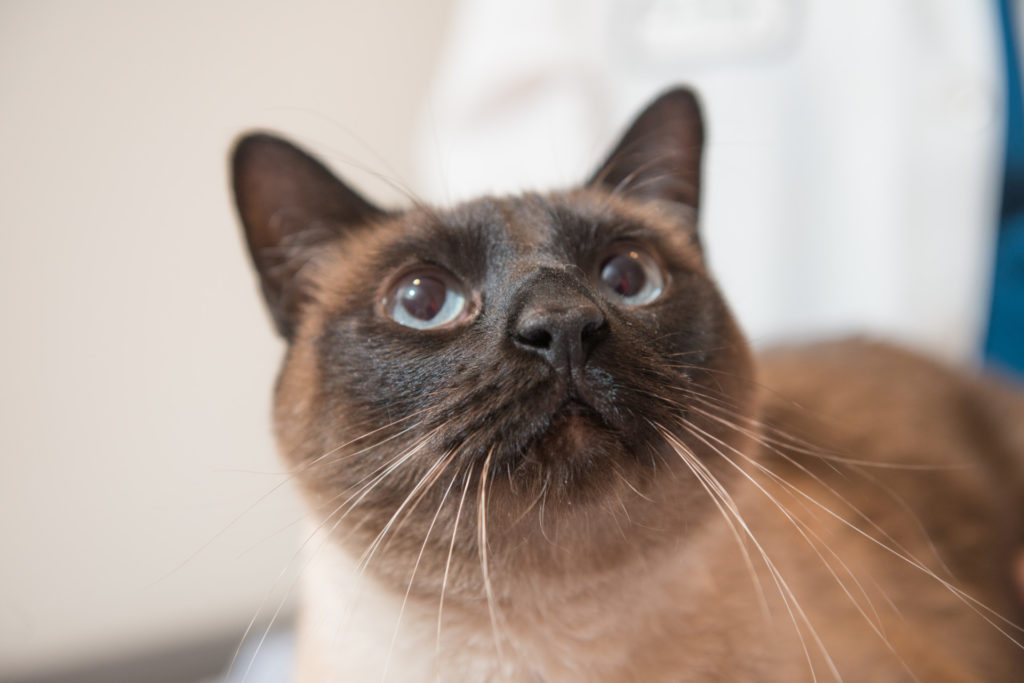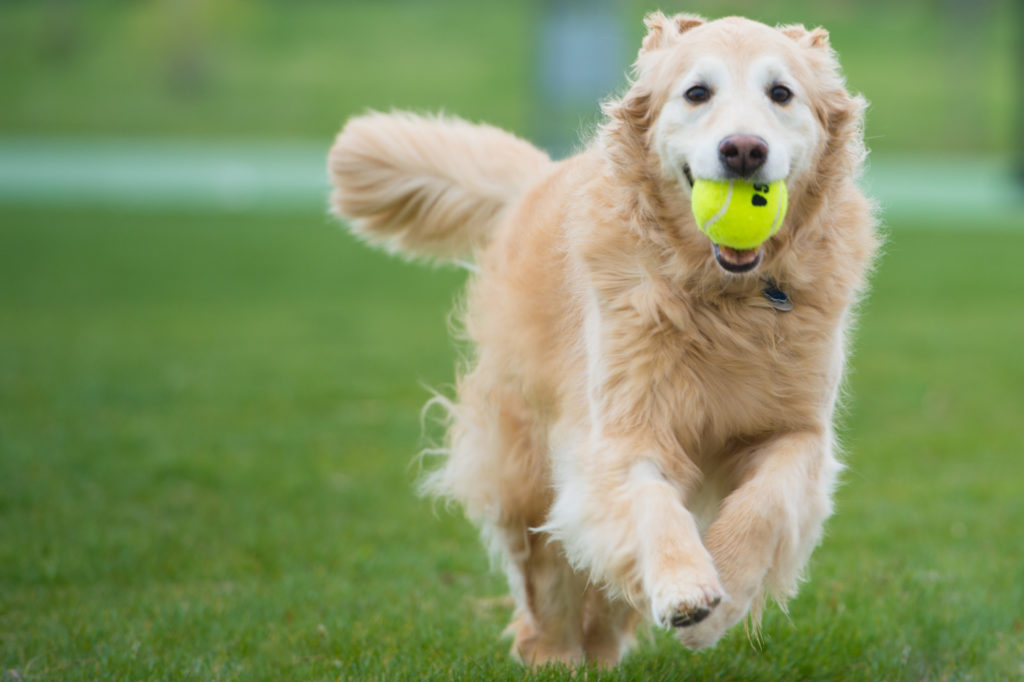
Above: Physical signs of aging in pets include clouding of the eyes and graying coat.
We often hear about – and, in many cases, think about – the impact of human aging on individual and societal health and wellbeing. In our older years, we might experience more knee pain, diminished eyesight, weight gain, or fatigue during activities we once completed with ease.
It turns out that many effects of aging are shared by people and pets. Just as we can take steps to care for ourselves and our senior family members, we can provide focused care for aging pets to help maintain their health and quality of life.
First, though, it’s useful to understand how we define seniority for furry family members – along with some notable health concerns to watch for among aging pets.
How ‘senior’ is defined in pets

The definition of “senior” depends in part on species and size. In veterinary medicine, we consider cats to be seniors starting at about 8 years old; small dogs also starting at about 8 years old; and large dogs starting at about 5 or 6 years old. For most pets, the senior years encompass the final 25 percent of predicted life span.
Of course, as with any rule of thumb, there are always outliers: The oldest dog reportedly lived to be 29, and the oldest cat lived to be 34. That’s pretty amazing, considering that the American Veterinary Medical Association estimates that a 20-year-old dog is equivalent in age to a person older than 96, and that a 20-year-old cat is about like a 97-year-old person.
Contrary to popular belief, there’s no simple ratio to determine the equivalency of “dog years” to human age. But the AVMA offers a chart, found on its website, that sheds some perspective on comparable ages among pets and people. This is useful mainly because it helps us to understand the timing for common health concerns and limitations that naturally come with age.
Signs of aging in dogs and cats
Below are some physical signs of aging in pets. These help pet owners assess the health status and needs of older animals.
- Clouding of the eyes
- Thinning and graying hair coat
- Weight gain or loss
- Changes in appetite and thirst, as well as dietary intolerance
- Decreased grooming behavior
- Exercise intolerance
In addition, we often see behavioral changes associated with aging in pets. These include more aggression and slower response to stimuli. In dogs, seniority may bring cognitive dysfunction; symptoms may be remembered using the acronym DISH:
- D: Disorientation
- I: Interaction changes
- S: Sleep/wake cycle changes
- H: House soiling
Diseases associated with pet aging include arthritis, cancer, diabetes, heart disease, kidney disease, liver disease and senility.
Know common diseases, specific concerns
While we cannot turn back the clock for our pets, we can learn about common diseases during old age, we can watch for symptoms, and we can seek veterinary care if we notice these symptoms or become concerned about any other signs of declining health. I encourage pet owners to discuss geriatric pet care with their veterinarians – not only to cover some of the general concerns described here, but to discuss concerns specific to individual pets.
In some cases, there are treatments available for common diseases; in other cases, pet owners and their veterinarians can use strategies to improve or maintain comfort and enjoyment of life.
Steps to support health and happiness

Preventive medicine is also paramount for our senior pets. The pet care described here will support health and happiness for pets of all ages – and become especially important for our older furry friends.
- Exercise – Recommended activities include playing, walking, swimming, physical therapy and massage.
- Weight control – Did you know that more than 50 percent of our pet dogs and cats are obese? Yes, obesity has become a widespread health concern for pets, just as it has for people. Obesity is associated with more wear and tear on joints, bones, the heart, kidneys and immune system. In short, controlling a pet’s weight is a vital step to ensuring optimal health.
- Diet – Nutrient needs are tied to a pet’s age and species. In general, old pets need more protein relative to carbohydrates, which equate to energy; easily digestible proteins are most important. Many pet-food formulations for seniors take these needs into account. Diet is another topic to discuss with your veterinarian.
- Parasite control – Heartworm preventive is recommended year-round, with fecal testing conducted annually to help keep tabs on what’s happening inside the pet’s body.
- Oral care – Regular dental care is important for all pets and should be supplemented with daily brushing. When purchasing pet treats with dental benefits, look for those approved by the Veterinary Oral Health Council. The council allows use of the VOHC Registered Seal on products intended to help retard plaque and tartar on the teeth of animals.
- Mental health – Help put a pet’s mind at ease with the combination of predictable, calming routines; enriching activities; and social interactions with favorite family members. The Indoor Pet Initiative at The Ohio State University offers insights into pet behavior and age-appropriate indoor activities that support sound mental health. For more information, click here.
- Environmental considerations – Consider adjusting placement of bedding, food, water and litter box so these necessities are accessible to older pets.
Dr. Rebecca Ruch-Gallie is chief of Community Practice at Colorado State University’s James L. Voss Veterinary Teaching Hospital. Community Practice provides general care, wellness services, and treatment of minor injuries and illnesses for pets.